Tips for raising a calm, confident puppy - from Animal Behaviourist Mark Vette
An anxious dog can struggle to enjoy the world—and it’s heartbreaking to watch them struggle. But the good news is, anxiety can almost always be prevented. By giving your pup the right start in life and meeting their emotional and physical needs as they grow, you can raise a dog who feels secure, relaxed, and ready to take on the world.
World renowned Animal Behaviourist Mark Vette shares some tips on how you can prevent anxiety in dogs, starting from puppyhood.
1. Understand your dog’s breed and needs
Every breed has different traits, energy levels, and sensitivities. Understanding your dog’s breed and traits helps you meet their emotional and physical needs more effectively.
For example:
- Working breeds like Border Collies or Kelpies need plenty of mental stimulation.
- Guardian breeds may require careful, structured socialisation to feel safe around strangers.
- Smaller or more sensitive breeds may need a gentler approach to new experiences.
Start by learning what your dog was bred to do and tailor their routine and training accordingly.
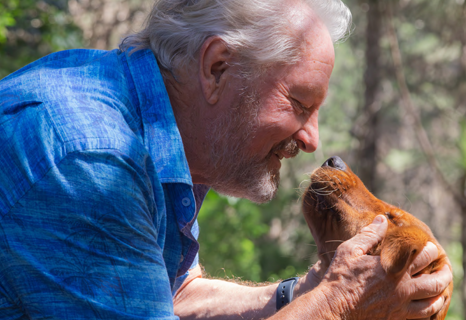
Mark Vette is a world-renowned Animal Behaviourist, Zoologist and Trainer. He brings together a unique combination of academic studies with 40 years of applied clinical animal behaviour consulting and treatment. Mark is a member of the International Association of Animal Behaviour Consultants. This article was written by Mark and the views expressed are his own.
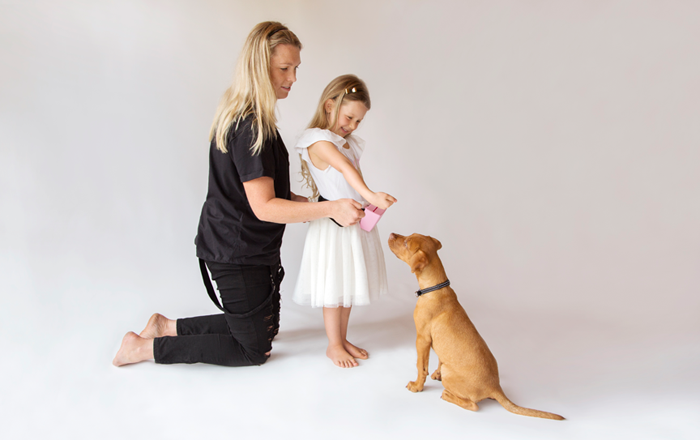
2. Prioritise early socialisation (8–16 weeks)
The most important window in a dog’s emotional development is their formative socialisation period, from 3 to 16 weeks old. During this time, your puppy is absorbing information rapidly and forming their view of the world.
Expose your pup—positively—to:
- People of all types (kids, men, women, elderly, visitors)
- Other dogs of various sizes, breeds and play styles
- Domestic animals (e.g. cats, chickens, horses)
- Common sounds and experiences (vacuums, grooming tools, car rides, vet visits)
- A variety of different environments (parks, cafés, shops, the beach, busy roads)
Ease in gently, and use food rewards, praise, and play to make each new experience enjoyable. If something goes wrong, don’t panic—help your puppy recover with treats, fun and calm redirection.
3. Avoid early frights
While exposure is critical, negative experiences can be just as powerful—in the wrong direction. It can take around five positive experiences to outweigh one negative experience!
Avoid:
- Rough handling by children
- Loud scolding or punishment
- Forcing your puppy into situations they’re not ready for (like a crowded dog park)
- Throwing them into water to “teach” swimming
- Interactions with mal-socialised dogs
Instead, gently introduce new things, and always associate them with treats, toys, and fun. If your pup gets scared, help them bounce back with calm encouragement - jolly them along!
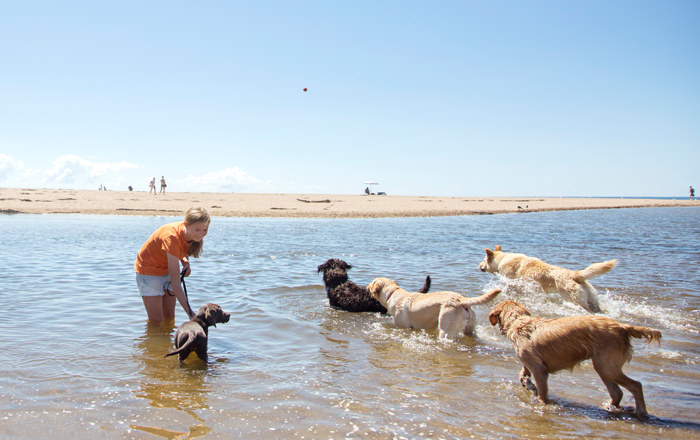
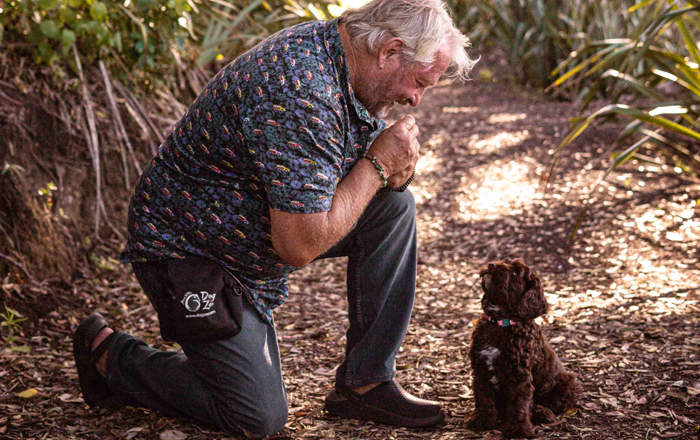
4. Build a secure, trusting relationship
A calm, confident dog trusts that their human is in charge and looking out for them - relieving the pressure they feel to always be “on alert”.
Build trust by:
- Being consistent and predictable
- Controlling key resources (meals, playtime, affection, freedom) to reinforce leadership
- Engaging in regular play, affection, and training
- Using positive reinforcement - clicker work is excellent!
- Remaining calm yourself - your dog takes their lead from you!
The more your dog trusts you, the more they’ll look to you for guidance when they feel unsure.
5. Meet their exercise needs
Under-exercised dogs are more prone to anxiety, restlessness, and behavioural problems. Daily physical activity reduces stress and improves mood.
Include:
- Daily walks (vary the route for novelty)
- Off-leash play or recall games (in safe areas)
- Tug, fetch, or flirt poles
- Play dates with other dogs
- Doggy daycare or pack walks if your dog is social
Note: Puppies need age-appropriate activity—avoid overexercising growing joints. Talk to your vet about appropriate exercise regimens specific to your puppies age and breed.
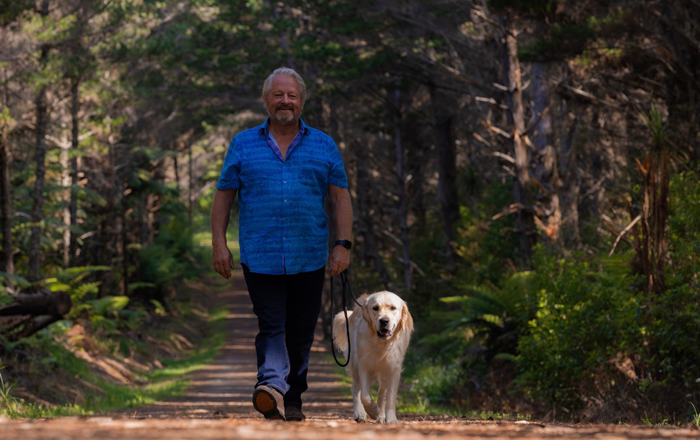
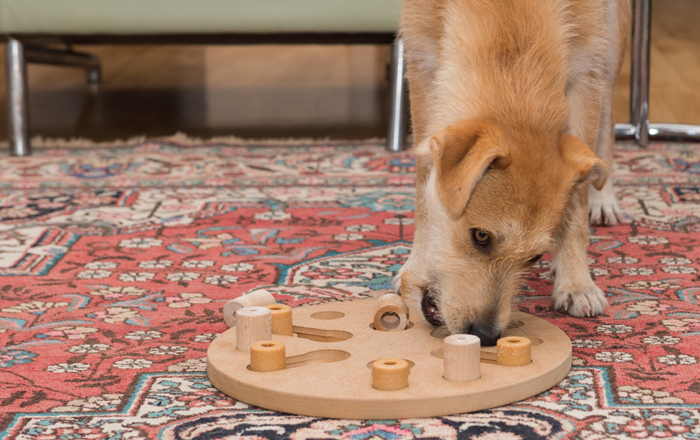
6. Provide mental stimulation
Dogs don’t just need physical activity—they need to use their brains too.
Try:
- Puzzle feeders and snuffle mats
- Hide-and-seek games
- Training sessions (tricks, commands, scent work)
- DIY enrichment games like “find the treat” or cardboard box puzzles
- Sniffaris - walks focused solely on allowing your dog to sniff and explore the environment freely
Mental stimulation helps build confidence and contentment, especially in high-drive breeds. The freedom to sniff and explore is especially beneficial - sniffing engages the parasympathetic nervous system (the "rest and digest" system), which can lower heart rate and stress hormones!
7. Create calm, safe spaces
A safe space helps your dog decompress, especially in a busy household. For many dogs, this is a crate (introduced positively), a cozy bed, or a quiet room. Make it comfy, low-traffic, and off-limits to kids and other pets when your dog needs a break. Over time, your dog will start using this space to self-regulate.
8. Stay calm yourself
Dogs are extremely sensitive to human emotions. If you’re anxious or reactive, they’ll pick up on it. Practise being calm, confident, and composed—especially during training or stressful situations. Use low, relaxed tones and smooth movements. Be your dog’s role model for emotional regulation.
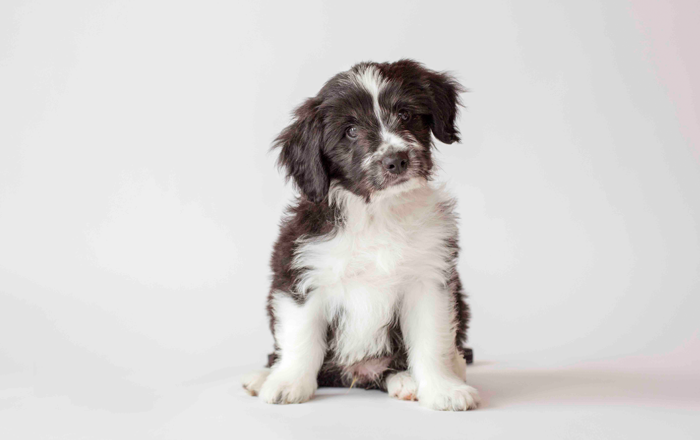
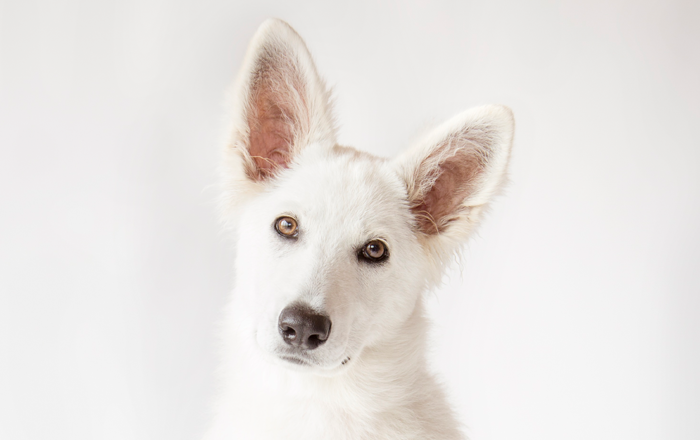
9. Don’t over-fuss
Constantly fussing over your dog—especially when they’re anxious—can unintentionally reinforce fearful behaviour. For example, greeting your dog with lots of excitement when you return home can increase separation anxiety. Keep greetings low-key. Reward calm behaviour, not needy or nervous reactions.
10. Teach recovery skills
Even well-socialised pups can get a fright. Teaching your dog how to recover from scary moments is key to building long-term resilience.
If something spooks them (like a dropped umbrella or a skateboard rolling past), move away but help them calm down nearby. Then slowly reintroduce them to the object using high value treats and play. Clicker training can be especially helpful here.
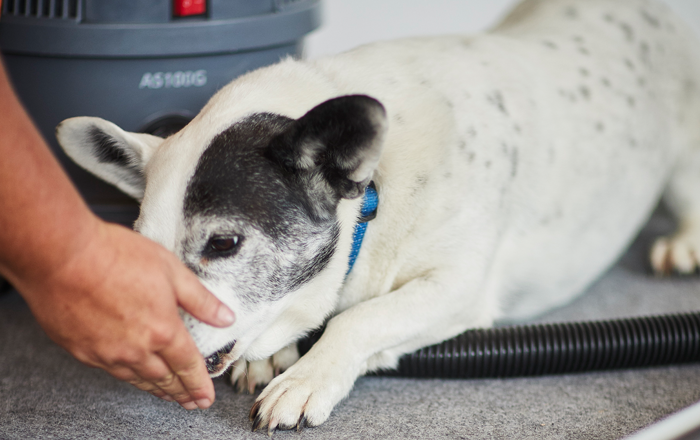
Final word
Preventing anxiety in dogs is all about intentionally creating positive early experiences, consistent routines, and a strong relationship built on trust. With a calm leader and a well-rounded upbringing, your dog will grow into a confident, relaxed companion who thrives in our complex world.
The time and effort you invest in those early weeks will pay off for years to come!
Always consult your vet on the best way to look after your pet. And to avoid unexpected costs, make sure your pet is insured.
Have a look at our pet insurance plans to choose the right insurance plan for your pet.
